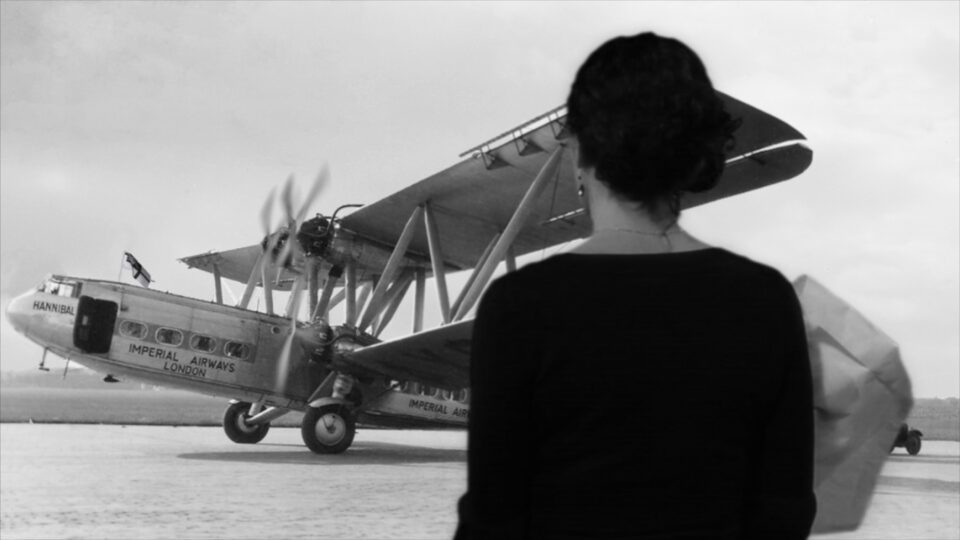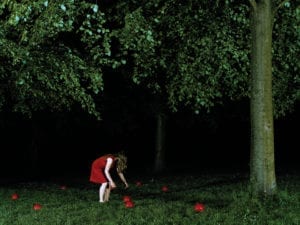The first encounter you have with Emily Jacir’s work at the Whitechapel Gallery is accompanied by the sound of Mahler’s Ninth Symphony. What this experience feels like quite depends on which movement coincides with your arrival. The symphony brings together elements of waltzes, but also the solemnity of a funeral march. For some, the work eloquently expresses death’s sudden arrival. For others, it celebrates life.
Jacir’s work contemplates life and confronts death too. Perhaps none so searchingly as the first work in the show and Jacir’s best known, Material for a film (2004-). A large-scale installation, it unpicks the final years, days and hours of the life of Palestinian writer Wael Zuaiter. In 1972, Zuaiter was assassinated near his home in Rome, shot 13 times by Mossad agents for a plot of which he was never a part. 12 bullets lodged in his body, the 13th in the spine of a book he planned to translate from Arabic to Italian, One Thousand and One Nights. Jacir has imbued the piece with symbolism and poignancy.
What makes a man? What causes him to die? In the aftermath of Zuaiter’s death, Jacir traces out possible answers to these questions and lets the viewer come to their own conclusion. As one letter to Zauiter’s partner Jean reads, sent by a friend after his death, “perhaps the few bits and pieces you told me about him on various occasions gave me an idea of what he was like.” Clues to a person exist and endure regardless of their owner. But as Jacir’s patient work suggests, ideas are the sum of what we’re offered.
These are bits and pieces; the parts that start to make up a whole. It implies a casualness which is apt here – Jean has mentioned Zauiter, at this point still alive, to a friend in passing, heedless of what’s to come. Though the installation features the arbitrary remnants of a man’s life – a coin he operated his elevator with, postcards, book covers – they have been gathered and laid out with careful purpose. As in all of Jacir’s work she takes a forensic interest in sequence, and what it might allow us to discern. It’s anything but casual.
Like the studious Material for a film, the following pieces on show again work through ideas of sequence, succession, accumulation and the spaces they leave behind. linz diary (2003) documents, through fuzzy CCTV shots, Jacir’s daily visits to a square in the Austrian city of Linz. Sometimes she sits, sometimes she curls up in a ball or brandishes an umbrella. Each image is annotated, but despite this, meaning breaks down. What is she doing in Linz? Why this square? There’s a madness in the method which only emerges as you stop to look. Nothing Will Happen (eight normal Saturdays in Linz) (2003), plays a similar game. Here, she observes the same square but from a new angle, homing in on the moment, at noon each day, when an alarm sounds. As it wails, the pedestrians criss-crossing the square seem unperturbed, continuing to go about their day. Even with repetition, nothing accrues any significance – like the money in Change/Exchange (1998), passed from bureau to bureau, we still, finally, end up with nearly nothing.
Perhaps the work that best sums up our condition as a bystander in Jacir’s world is ex libris (2010-12). Presenting images of markings left in books: stamps, scribbles, stains, annotations, the viewer is obliged to search for meaning and decipher this incomprehensible ephemera. Neatly lined up, they tease the viewer with narratives they’ll never understand. Though her art continually probes, it ensures meaning’s careful elision too. Her meticulous stockpiling – of images, documents, times and dates – in the end just demonstrate the answers we’ve failed to add up. In the end we are powerless. Like the woman in Lydda Airport (2009), we can only stand on the runway, waiting.
Imogen Greenhalgh
Emily Jacir: Europa, until 3 January, Whitechapel Gallery, 77 – 82 Whitechapel High Street, London E1 7QX.
Discover more at www.whitechapelgallery.org.
Follow us on Twitter @AestheticaMag for the latest news in contemporary art and culture.
Credits
1. Emily Jacir, Lydda Airport, 2009. Installation with single channel animation film and sculpture dimensions variable. Photo: Jason Mandella © Emily Jacir, courtesy Alexander and Bonin, New York.





